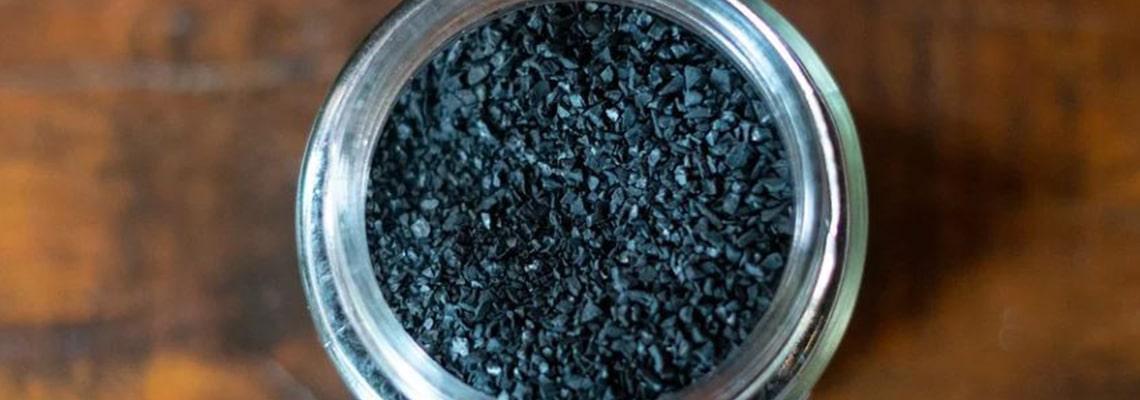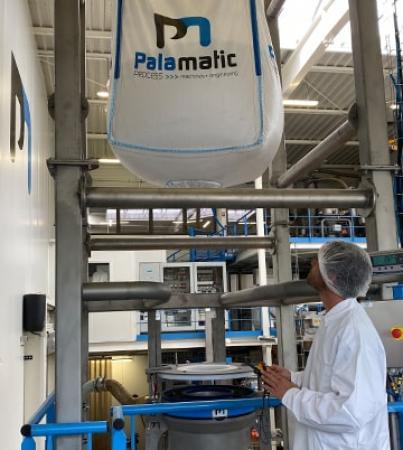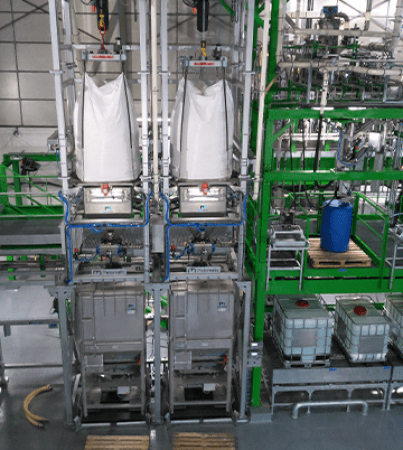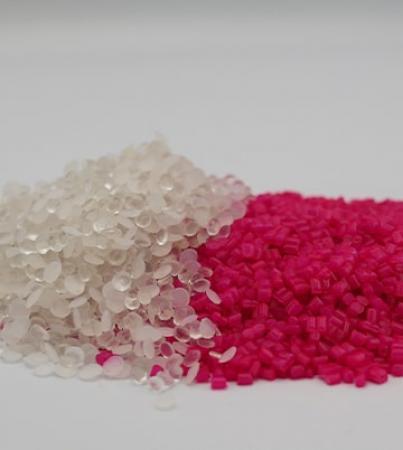1. Main characteristics of activated carbon
Activated carbon, also known as activated charcoal, is a material consisting mainly of carbon with a porous structure. It can be obtained from any organic plant material rich in carbon (coconut shells, peanut shells, bark, wood pulp, olive pits, lignite, twigs, leaves, oil residues, etc.). Two steps are necessary for its creation: a calcination or carbonization step and an activation step which will increase its adsorbing properties. A distinction is made between vegetable activated carbon and mineral activated carbon according to its source material. It has a large specific surface: from 500 to 2500 m² / G.
Activated charcoal takes on the appearance of a black solid. It comes either in the form of powders, (CAP), grains or pellets / extrudates.
• Powdered activated carbon appears in the form of grains with a particle size between 10 and 50 µm. In this configuration, it is mainly found in the treatment of water and gas.
• Grain activated carbon measures between 0.2 and 5 mm and is used to remove organic micro pollutants and organic matter from water.
• Extruded activated carbon is cylindrical and has a size ranging from 0.8 to 5 mm. Its main use is in the treatment of gases.
It is a hydrophobic material, meaning that it absorbs little water vapor at low relative humidity.
2. Main applications of activated carbon
Coal has many applications. It is found in the fields of:
- Chemistry where it is used in the dechlorination of water, the storage of hydrogen, the elimination of hydrocarbons in water, stain removal, decaffeination or even as a sampling medium for airborne pollutants
- Filtration and purification of contaminated air
- Water treatment: drinking water, wastewater, industrial wastewater, etc.
- Smoke treatment and waste incineration
- The food industry where it is used for its purification and discoloration properties
- Medicine and pharmaceuticals to counter poisoning, gastroenteritis or more generally, purify the body by eliminating toxins
- Mining
- Cosmetics for products such as blackhead masks or whitening toothpastes

3. Industrial handling of activated carbon
Activated carbon is a substance considered dangerous when it is in the in the form of a combustible dust.
In order to reduce the risk of explosion, care must be taken to avoid any accumulation of dust in the working environment. An exhaust ventilation system suitable for the production equipment may be installed.
It is also important to keep coal away from all sources of ignition including heat, sparks and flames. It is advisable to store activated charcoal in a dry, cool and well-ventilated place, away from volatile chemicals which the material can adsorb.
Strong oxidizing agents or strong acids are incompatible with charcoal.
4. Customer applications Palamatic Process with activated carbon
Palamatic has been supporting industrialists handling activated carbon in their process since 1992. Several efficient installations have been set up with our customers:
- A big bag emptying station of activated carbon in containment and under an ATEX 22 atmosphere
- A big bag deconditioning unit for filling a tanker truck
- Unpacking of bags and pneumatic transfer of activated carbon and lime for drinking water filtration
Our experts hold the ATEX certifications necessary for handling activated carbon and are available to analyze your powder and test it on a large scale with our industrial equipment center. Contact us with your project requirements!

















